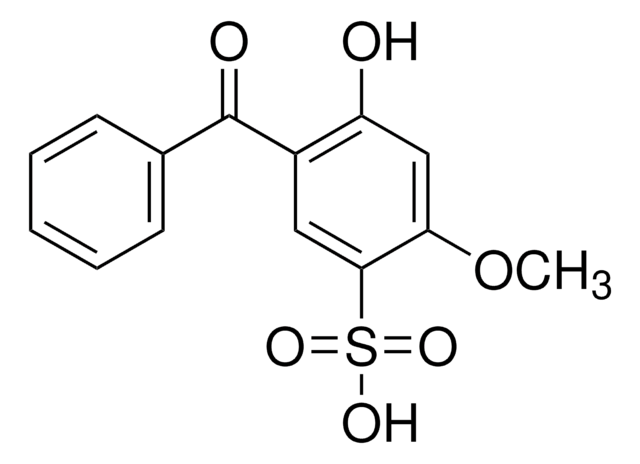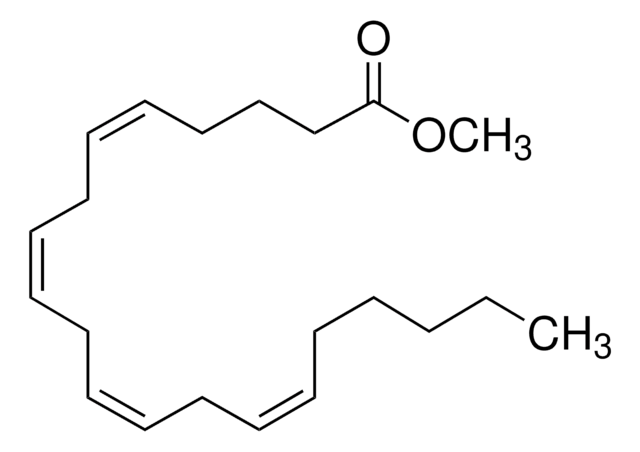SML1395
Arachidonic acid sodium salt
from Mortierella alpina, ≥98.5% (GC), waxy solid, lipid precursor
Synonyme(s) :
5,8,11,14-Eicosatetraenoic acid, Eicosa-5Z,8Z,11Z,14Z-tetraenoic acid, Sodium arachidonate, cis,cis,cis,cis-5,8,11,14-Eicosatetraenoic acid sodium salt, 20:4
About This Item
Produits recommandés
product name
Arachidonic acid sodium salt from Mortierella alpina, ≥98.5% (GC)
Source biologique
Mortierella alpina
Niveau de qualité
Pureté
≥98.5% (GC)
Forme
waxy solid
Couleur
white to off-white
Solubilité
methanol: 50 mg/mL, clear, colorless to faintly yellow
Conditions d'expédition
dry ice
Température de stockage
−20°C
Chaîne SMILES
O=C(O[Na])CCC/C=C\C/C=C\C/C=C\C/C=C\CCCCC
InChI
1S/C20H32O2.Na/c1-2-3-4-5-6-7-8-9-10-11-12-13-14-15-16-17-18-19-20(21)22;/h6-7,9-10,12-13,15-16H,2-5,8,11,14,17-19H2,1H3,(H,21,22);/q;+1/p-1/b7-6-,10-9-,13-12-,16-15-;
Clé InChI
DDMGAAYEUNWXSI-XVSDJDOKSA-M
Description générale
Application
Actions biochimiques/physiologiques
Attention
Code de la classe de stockage
11 - Combustible Solids
Classe de danger pour l'eau (WGK)
WGK 3
Point d'éclair (°F)
235.4 °F - closed cup
Point d'éclair (°C)
113 °C - closed cup
Certificats d'analyse (COA)
Recherchez un Certificats d'analyse (COA) en saisissant le numéro de lot du produit. Les numéros de lot figurent sur l'étiquette du produit après les mots "Lot" ou "Batch".
Déjà en possession de ce produit ?
Retrouvez la documentation relative aux produits que vous avez récemment achetés dans la Bibliothèque de documents.
Les clients ont également consulté
Notre équipe de scientifiques dispose d'une expérience dans tous les secteurs de la recherche, notamment en sciences de la vie, science des matériaux, synthèse chimique, chromatographie, analyse et dans de nombreux autres domaines..
Contacter notre Service technique









